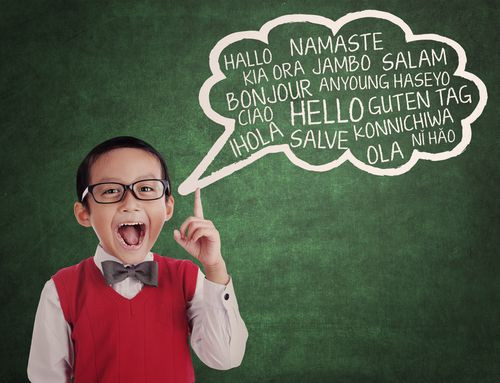How To Learn A New Language: Stop Trying So Hard

A child will learn a new language more easily than an adult in most cases and, in 1990, the linguist Elissa Newport came up with a theory to explain the reason why: Adults try to analyze too much information all at once. By comparison, children, with their less developed prefrontal cortexes, present less resistance when it comes to absorbing certain aspects of a new language. Now, a new study led by Amy Finn, a postdoc researcher at MIT’s McGovern Institute for Brain Research, finds Newport’s hypothesis to be essentially correct. Finn and her colleagues discovered the harder adults tried to learn an artificial language, the worse they performed on the more complex aspects of language, such as comprehending grammatical features.
Active vs. Passive Learning
To better understand language acquisition, the research team ran a series of three experiments with the help of 22 native English-speaking undergraduates (81 percent female) at UC Berkeley. In the first experiment, participants were exposed to a continuous speech stream of an artificial language. The research team instructed one group of participants to listen passively and not analyze what they were hearing. To help them not overthink, participants were given the choice of working on a puzzle or coloring while they listened. With the second group of participants, the team requested they listen actively and try to identify the words they were hearing.
Each group heard the same recording, which was a series of three-word sequences from three separate categories with no pauses between words. Participants in both groups performed well at identifying where each word began and ended, though the group instructed to consciously listen performed slightly better at this word segmentation task. Both groups also performed well in a second word ordering experiment, which required them to choose between a correct and incorrect word sequence. Yet, when participants were asked to judge whether a new, previously-unheard word was in the correct location, the passive learners outperformed the active learners by far.
“We found that effort helps you in most situations, for things like figuring out what the units of language that you need to know are, and basic ordering of elements,” Finn stated in a press release. “But when trying to learn morphology, at least in this artificial language we created, it’s actually worse when you try.” Adults, it seems, may very well be victims of their own highly developed prefrontal cortex when learning a new language. This area of the brain orchestrates thoughts and actions, while also being involved in personality expression, decision-making, and moderating social behavior. Too much thinking, this study indicates, gets in the way of language learning.
Source: Finn AS, Lee T, Kraus A, Kam CLH. When It Hurts (and Helps) to Try: The Role of Effort in Language Learning. PLOS ONE. 2014.
Published by Medicaldaily.com



























